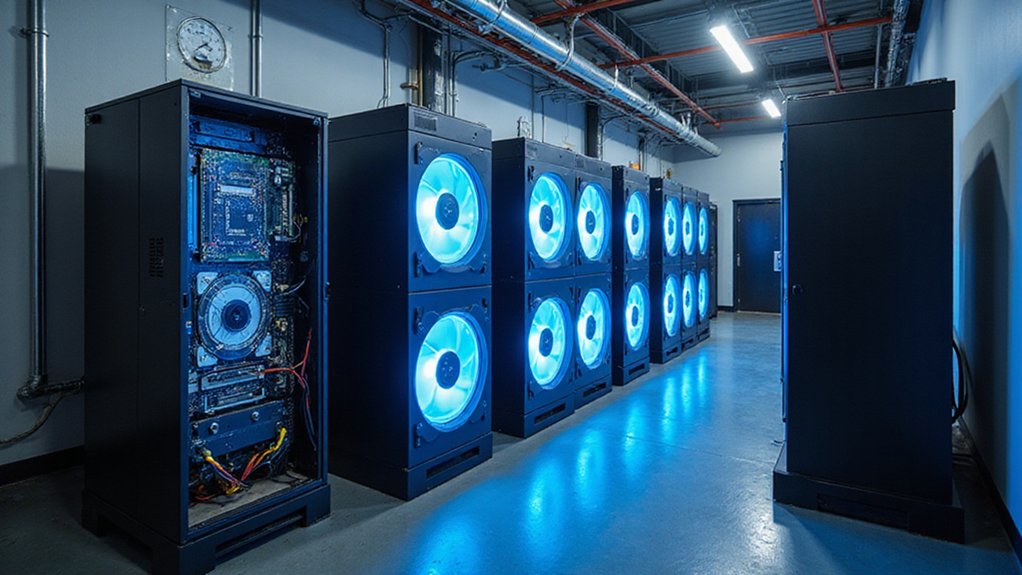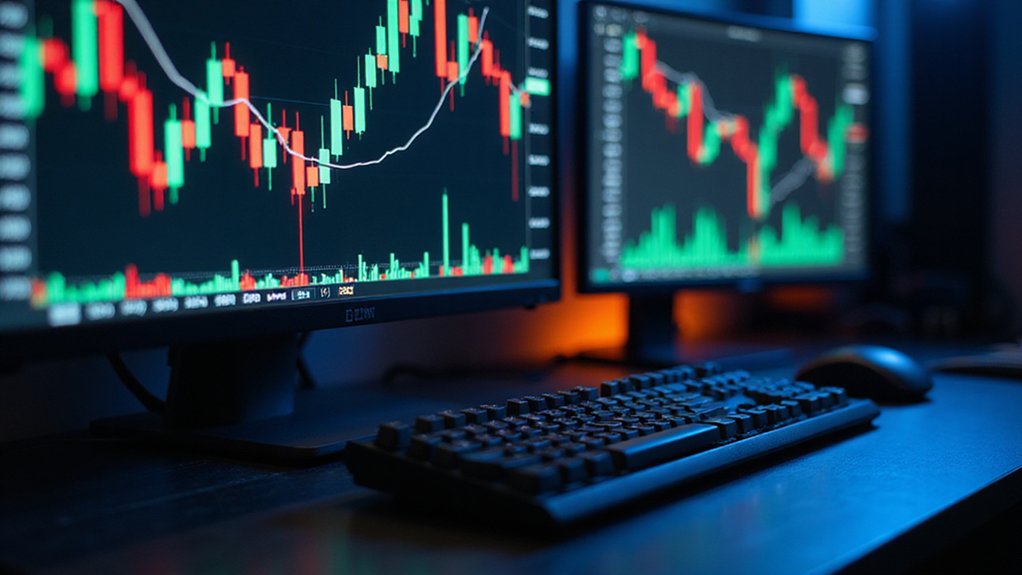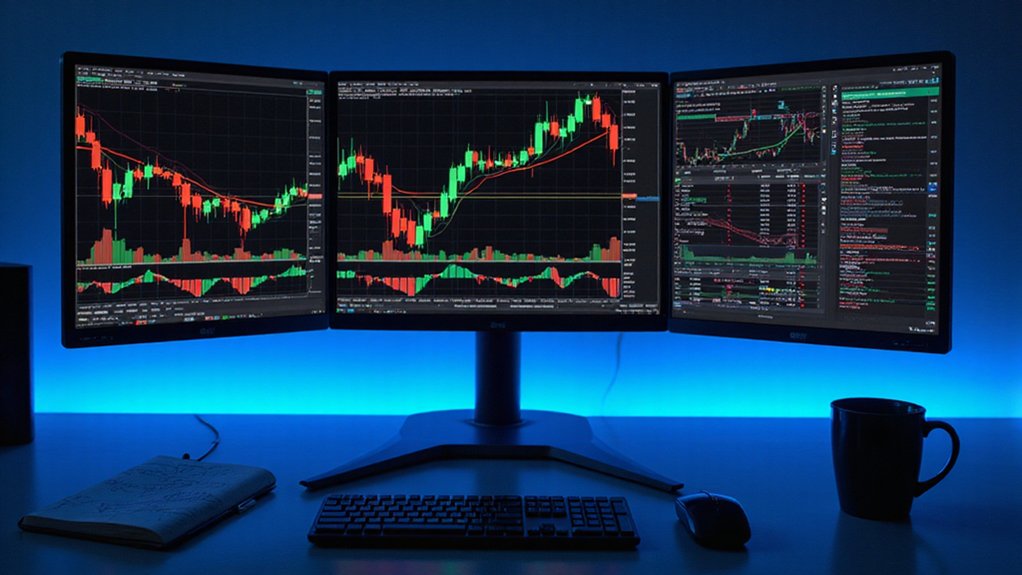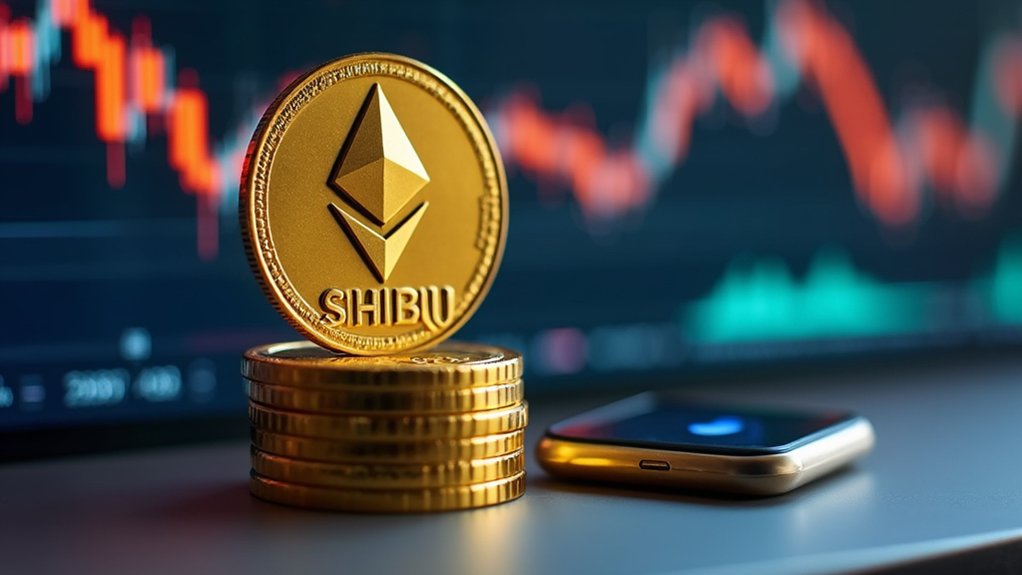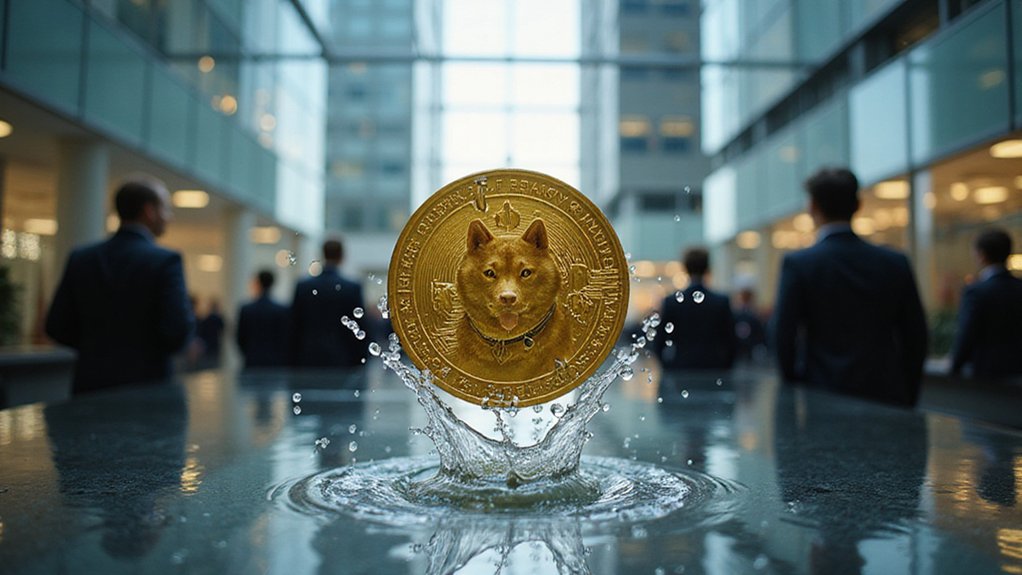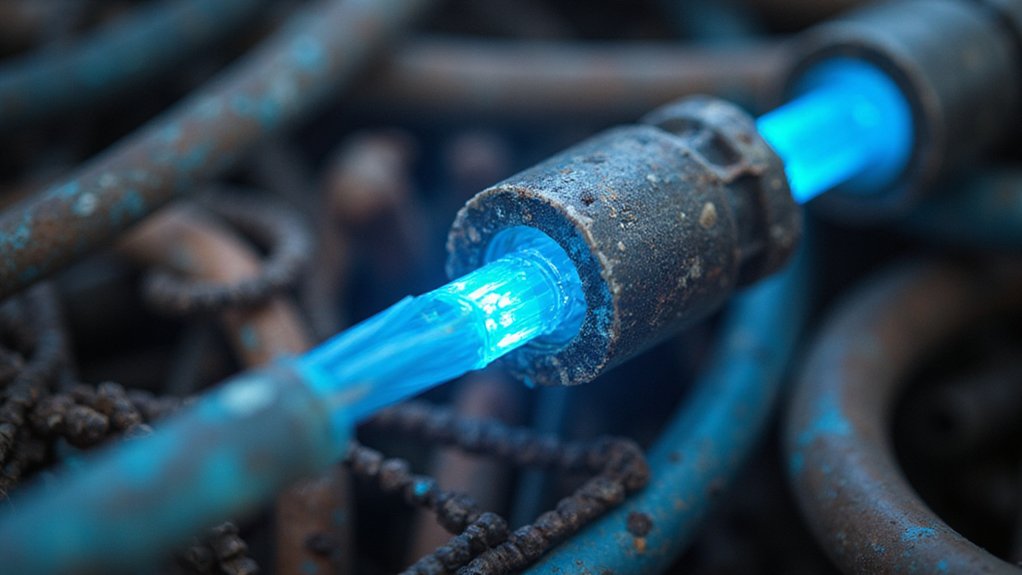Bitcoin mining combines computational puzzle-solving with financial reward systems—specialized computers race to validate transactions by finding cryptographic hashes below a difficulty threshold. Miners select fee-generating transactions, arrange them into blocks using Merkle trees, then compete in the energy-intensive proof-of-work competition. Successful miners receive newly minted bitcoins (currently 6.25 BTC) plus transaction fees, while the network automatically adjusts difficulty to maintain its ten-minute block cadence. The elegance of this system reveals itself further in its mathematical underpinnings.
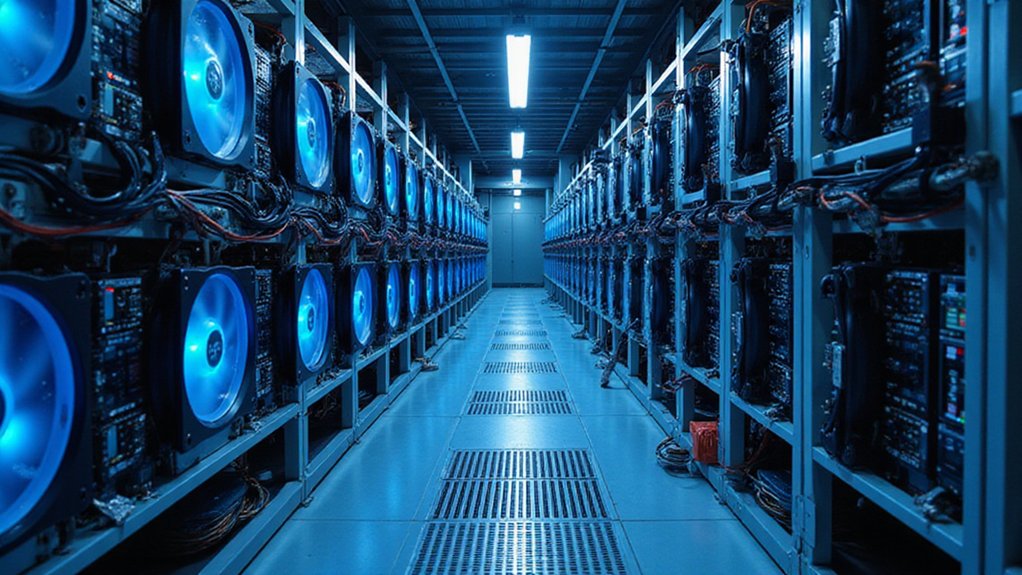
When one considers the digital alchemy of modern finance, perhaps nothing is more fascinating than the process through which bitcoins materialize from the ether of computational work.
This cryptographic mining—a term deliberately evocative of extractive industry—operates as both the validation mechanism for the Bitcoin network and the means by which new coins enter circulation.
Unlike traditional currency issuance by central banks (those bastions of inflationary policy), Bitcoin emerges through a decentralized competition requiring substantial computational resources.
The mining process begins with the humble transaction.
Miners sift through the mempool—a waiting room for unconfirmed transfers—selecting those that offer the most attractive fees.
These transactions are then assembled into candidate blocks, where they undergo verification before being arranged into an elegant data structure called a Merkle tree.
This mathematical construct compresses all transaction information into a single hash, the Merkle root, which becomes part of the block header alongside a reference to the previous block’s hash, maintaining the blockchain’s unbroken lineage.
The crux of mining lies in solving a cryptographic puzzle that would make even the most dedicated puzzle enthusiast blanch.
Miners must find a block header hash—by repeatedly adjusting a nonce value—that falls below a network-defined threshold.
This Proof-of-Work system demands enormous computational effort (and accordingly, electricity consumption that would make environmental activists apoplectic).
The difficulty adjusts automatically to maintain the network’s rhythm of one block approximately every ten minutes.
Success in this computational lottery rewards miners with newly minted bitcoins plus transaction fees.
These rewards—currently fixed per block but halving approximately every four years—serve as the economic incentive that powers the entire system.
As specialized ASIC hardware has replaced general-purpose computers in the mining ecosystem, the arms race for efficiency continues unabated. Miners who succeed in adding a new block to the blockchain receive rewards that are increasingly difficult to obtain due to high competition among participants worldwide.
The ingenious hashing algorithms that underpin the mining process ensure the security and immutability of the blockchain by making it computationally impractical to alter previous records.
The system’s elegant design guarantees that as more miners join, difficulty increases proportionally, preserving the delicate balance between security and scarcity that underpins Bitcoin’s value proposition. The entire process effectively prevents double-spending problems that could otherwise undermine trust in digital currency systems.
Frequently Asked Questions
How Long Does It Take to Mine a Single Bitcoin?
Mining a single bitcoin isn’t a direct process—it’s calculable only through probabilistic approximations.
Currently, with blocks yielding 3.125 BTC every ~10 minutes, theoretical time per bitcoin averages 3.2 minutes.
However, this oversimplifies the stochastic reality; individual miners rarely secure entire blocks, instead pooling resources for fractional rewards proportional to contributed hash power.
Factor in network difficulty adjustments and quadrennial halvings (which, incidentally, progressively double mining time per unit), and one appreciates why this seemingly straightforward question defies simplistic answers.
Can Mining Damage Computer Hardware Over Time?
Mining can indeed damage computer hardware over time.
The continuous high-intensity operations generate substantial heat, accelerating component degradation—particularly in GPUs and ASICs.
The relentless workload causes wear on cooling systems, while power supplies strain under constant demand.
Without proper cooling, temperature monitoring, and maintenance, these effects compound dramatically.
Even with mitigation strategies like undervolting and enhanced cooling solutions, mining inevitably shortens hardware lifespan compared to normal usage—a depreciation cost many enthusiasts conveniently overlook when calculating profitability.
Is Bitcoin Mining Legal in All Countries?
Bitcoin mining exists in a global regulatory patchwork—far from universally legal.
While countries like the United States, Canada, and Germany embrace mining (albeit with varying regulatory frameworks), nations including China, Egypt, and recently Angola have implemented outright bans.
Environmental concerns frequently motivate restrictions, as evidenced by New York State’s carbon-based mining moratorium.
Between these poles lie numerous jurisdictions with ambiguous stances—neither explicitly permitting nor prohibiting mining operations, creating significant compliance challenges for institutional miners operating transnationally.
How Much Electricity Does Bitcoin Mining Consume Globally?
Bitcoin’s global electricity consumption presents a moving target for analysts, with estimates ranging from 67-240 TWh annually.
Recent mid-2024 assessments suggest approximately 155-172 TWh/year—roughly equivalent to Australia’s entire national consumption (a sobering 0.9% of global electricity).
This digital appetiteˡ exceeds Pakistan’s national grid demand despite serving a population of 230+ million.
Post-China’s mining ban, the US share surged dramatically from 3.4% to 37.8%, creating localized infrastructure strains worth monitoring.
ˡAnd one that requires the carbon-offsetting equivalent of planting 3.9 billion trees—essentially reforesting the Netherlands.
Can I Mine Bitcoin Effectively With a Regular Laptop?
Mining Bitcoin with a regular laptop is technically possible but economically indefensible.
The hash rate disparity between consumer hardware (operating in kH/s or mH/s territory) and purpose-built ASIC miners renders the exercise futile—akin to bringing a spoon to an excavation site.
Electricity costs invariably exceed potential rewards, while thermal constraints practically guarantee accelerated hardware deterioration.
Those determined to utilize laptops should consider CPU-friendly altcoins instead, though even there, profitability remains dubious at best.
